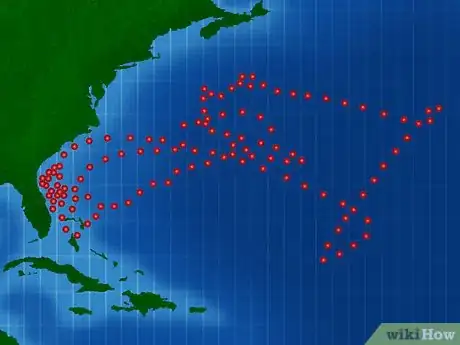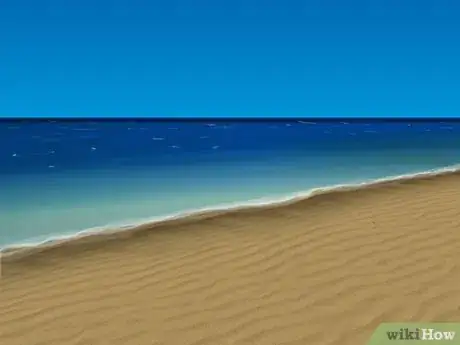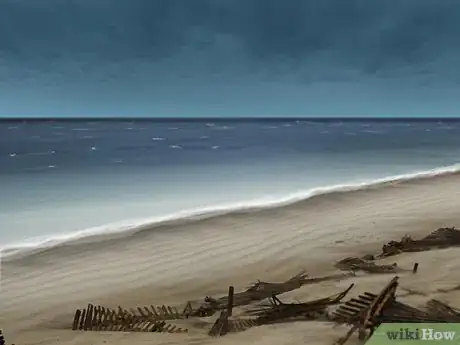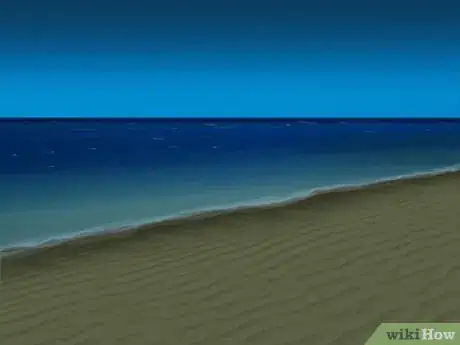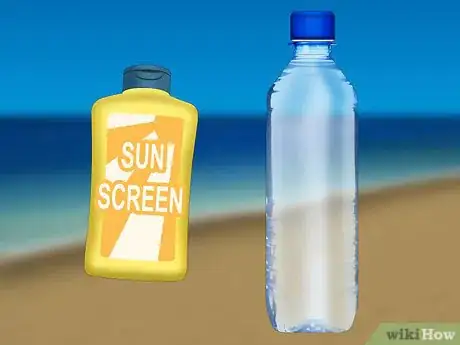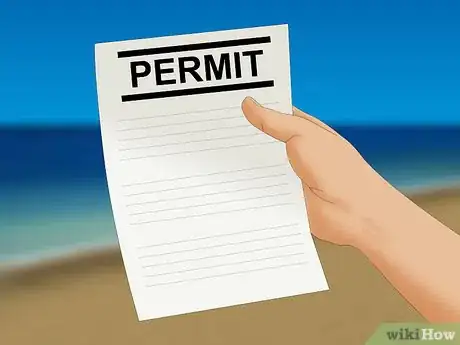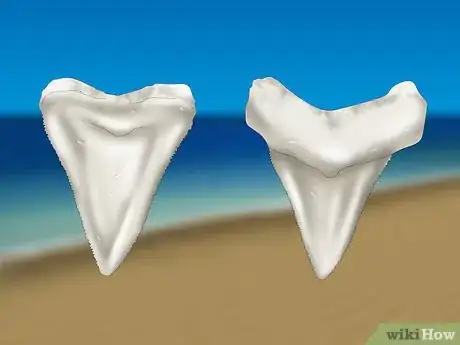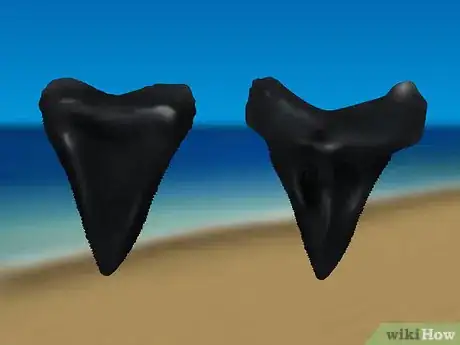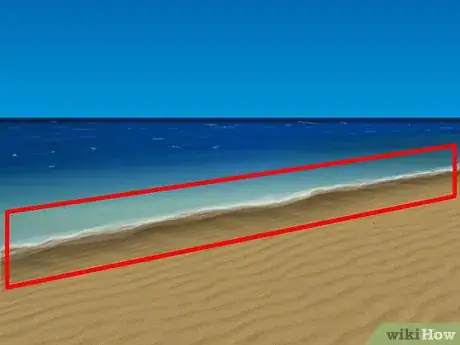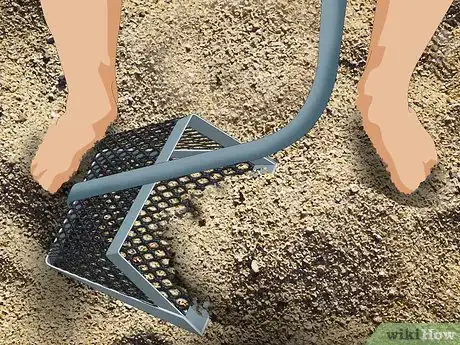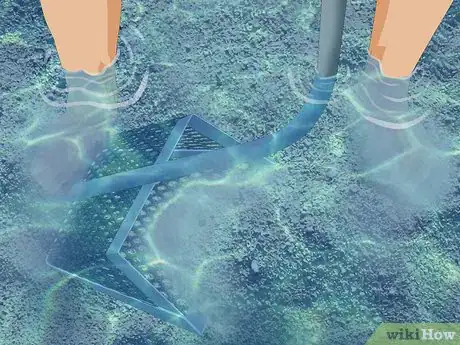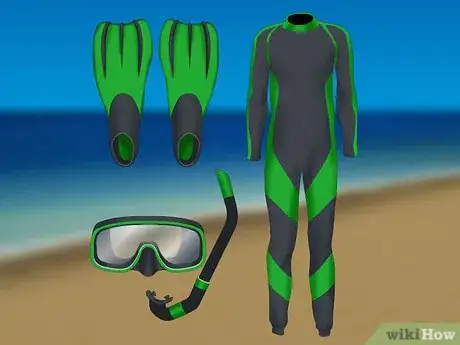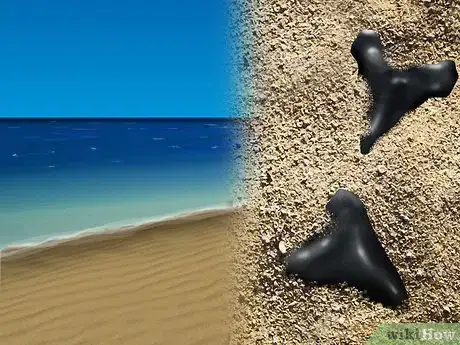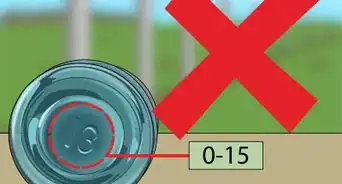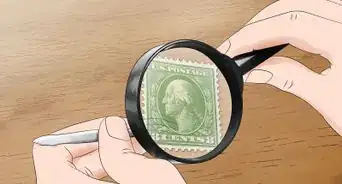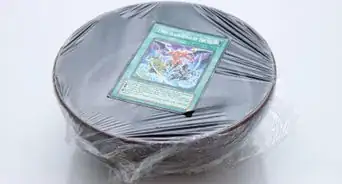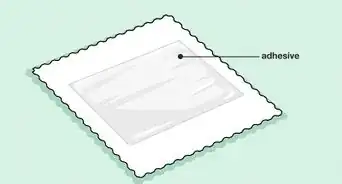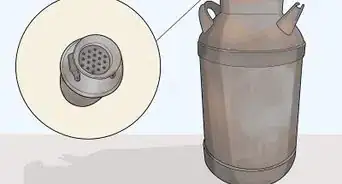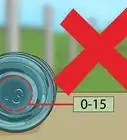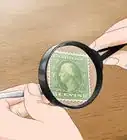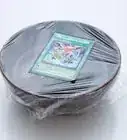This article was co-authored by wikiHow Staff. Our trained team of editors and researchers validate articles for accuracy and comprehensiveness. wikiHow's Content Management Team carefully monitors the work from our editorial staff to ensure that each article is backed by trusted research and meets our high quality standards.
There are 7 references cited in this article, which can be found at the bottom of the page.
wikiHow marks an article as reader-approved once it receives enough positive feedback. In this case, 91% of readers who voted found the article helpful, earning it our reader-approved status.
This article has been viewed 114,858 times.
Learn more...
Finding shark teeth can be a fun, easy activity to do when you're at an ocean beach. You just need to know where to look and how to identify a shark tooth when you see one. You can keep teeth as souvenirs, or string them on a necklace and wear them.
Steps
Selecting a Location
-
1Learn about shark migration patterns. Sharks migrate to and from different areas depending on the time of year. Some areas have lots of shark teeth because large numbers of sharks travel around the shores often. For example, sandbar sharks are found in large numbers off the east coast of Florida in spring when they mate. They move north at the end of summer and have their pups, so areas like Delaware Bay have a large population towards the early fall.[1]
-
2Find a beach. Look up shark populated areas and select a beach to search for teeth. Sharks live in salt water only (except bull sharks who swim up into freshwater rivers that connect to the ocean). So don't go looking in your local pond. Sharks are more common in hot, humid places such as Hawaii and Florida. Although they can also be found at the poles.
- Many coastal regions of states near the ocean like California, Florida, Hawaii, Virginia, Carolina, and Alabama were once underwater. You can sometimes even find shark teeth fossils in these areas on dry land or in river beds since large portions of the state were submerged. Sharks were often drawn to these shallow waters to seek food.[2]
Advertisement -
3Go after a storm. Big storms can bring in all sorts of debris from the ocean, including shark teeth.[3] There will also be fewer visitors on the beach on days when the weather is less than ideal.
-
4Start early. Go in the morning when there are fewer people in the water. The calmer waters will make it easier to see any shark teeth.
- Weekdays are usually a less popular beach time, so go then if possible to avoid the crowds.
-
5Be prepared. You won't find a shark tooth in five minutes. Be prepared to stay at the beach for a couple of hours. Bring sunscreen and some water to stay there properly without harm. You may also want to pack a picnic lunch.
-
6Ask locals to help you find the best spot. People may be able to tell you about shark tooth hot-spots or places where they commonly found teeth. If you aren't from the area, a local may be able to tell you which beaches draw crowds and when, and which ones have a lot of teeth. You can improve your chances of finding teeth right away if you find someone that can point you in the right direction.
-
7Get a permit, if necessary. Depending on what state or country you are looking for shark teeth in, you may need to get a permit before searching for fossils. In some areas, permits aren't necessary for shark teeth, but you never know what else you might find.
Spotting Teeth
-
1Learn what shark teeth look like. Shark teeth have a pointy top and a thin body. Most teeth along the beach or shoreline are 1/8" to 3/4" but you can often locate larger teeth further out in the ocean. Some teeth look like a triangle without a top, some are more Y-shaped. Identification can sometimes be difficult because the tooth characteristics can change depending on the location of the tooth in the jaw, and the age or sex of the shark.[4]
-
2Look for the color black. Many fossilized shark teeth are black. These are what you are most likely to find along the beach. Other less common colors of shark teeth are gray or brown. Modern shark teeth are usually white in color on the tooth and the root, they are seldom found along the shoreline.[5]
- Remember everything you find that is triangular isn't a shark tooth, they could be rocks or stones so be sure that you know the looks of a tooth.
- Look for any souvenir shops near the beach. They may have some shark teeth for sale so you can see an example of what you are searching for.
-
3Scan along the shore and in the shallow waters. Shark teeth can often be found in easily on top of the loose sediment. It might be hard to spot among the shells and pebbles. If you just look on top of the sand you might not have a lot of luck.
-
4Scoop up some sand near the water's edge. If you do not spot any teeth on the surface, you will need to start digging. Bring some tools. You might want a shovel, trowel, or bucket. You will probably want something to sift sand with, like a colander or strainer.[6]
- Dig in a place where sand is unusually elevated. Teeth won't always be on the surface. Sand constantly covers up old sand with new sand. Don't be afraid to get your hands dirty.
-
5Search in the water. If you aren't having much luck on the beach, try moving out into the shallows. Bring your strainer and reach down below the surface and scoop up some sediment. Sift through the sediment to see what you find.
- While shark teeth are the big catch, keep an eye out for other cool items like stingray, porpoise, or crocodile teeth. You might find some cool shells, too.
-
6Consider renting some scuba diving equipment. You can search more terrain off the shoreline when you go diving and you might find some larger, older shark teeth by searching a little further from the beach.
-
7Be patient. Don't just glance at an area of sand and move on. Finding sharks teeth usually takes a bit of time and persistence. Waves may bring in new teeth, so it is a good idea to check areas multiple times. A single shark can produce up to 25,000 teeth over a lifetime, so there are plenty of them out there to be found.[7]
Community Q&A
-
QuestionHow many teeth do sharks have?
 LAUREN BRADFORDCommunity AnswerSharks have 50 teeth, but they have multiple rows of teeth in development that are ready to take the place of teeth that fall out.
LAUREN BRADFORDCommunity AnswerSharks have 50 teeth, but they have multiple rows of teeth in development that are ready to take the place of teeth that fall out. -
QuestionWhere is the best beach to find shark teeth?
 Community AnswerMyrtle Beach, Pawleys Island, Garden City, Surfside Beach, Litchfield, Daytona, and Venice Beach FL.
Community AnswerMyrtle Beach, Pawleys Island, Garden City, Surfside Beach, Litchfield, Daytona, and Venice Beach FL. -
QuestionWhich beaches did you go to for shark teeth?
 Community AnswerI found mine at North Myrtle Beach.
Community AnswerI found mine at North Myrtle Beach.
Warnings
- Shark teeth can be sharp, so use care when handling them.⧼thumbs_response⧽
- Be careful about the tide, it could possibly pull you in.⧼thumbs_response⧽
References
- ↑ http://oceanofk.org/tag/Tagmigrate/cfactorscause.html
- ↑ http://www.flmnh.ufl.edu/fish/discover/sharks/fossil-sharks/fossil-vs-modern
- ↑ http://www.fossilguy.com/sites/venice/
- ↑ http://www.elasmo-research.org/education/evolution/guide.htm
- ↑ https://www.flmnh.ufl.edu/fish/sharks/fossils/fossil_modernsharkteeth.html
- ↑ http://www.colonial-beach-virginia-attractions.com/shark-tooth.html
- ↑ http://www.venicetravelplanner.com/sharks_teeth/index.html
About This Article
To find shark teeth, start by heading for a beach in a shark-populated area early in the morning, when the water is calm and it’s easier to spot them. When you get there, look along the shore line and in the shallow waters. Keep an eye out for small, black objects, since black is the most common color of fossilized shark teeth. Additionally, pick up anything that looks like a triangle without a top, or that’s shaped like a “Y." If you don’t have any luck scanning the beach’s surface, try scooping up sand and sifting through it, instead. For tips on how to increase your chances of finding shark teeth by talking to locals and taking a cue from the weather, read on!
